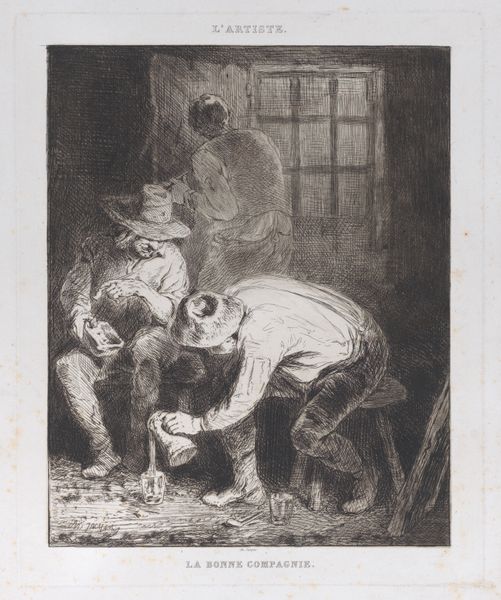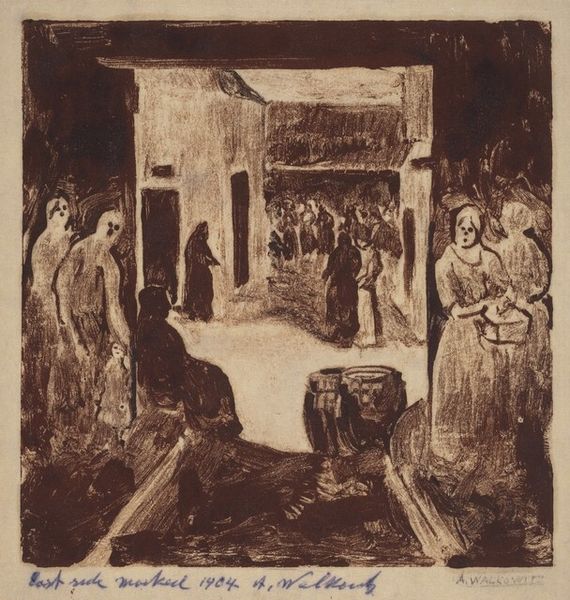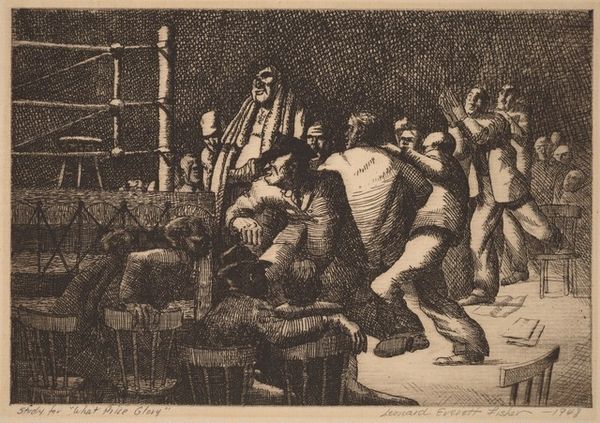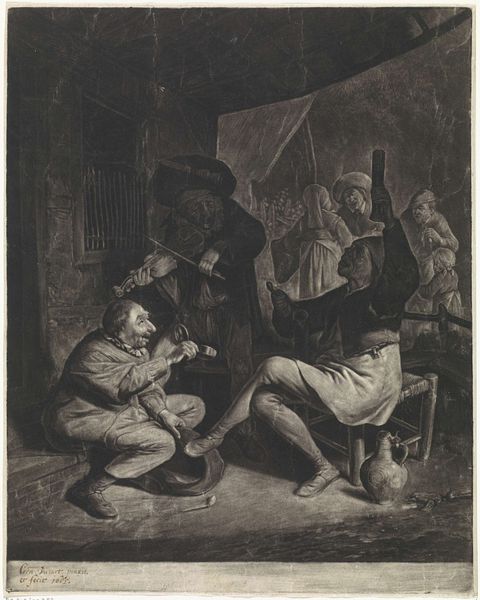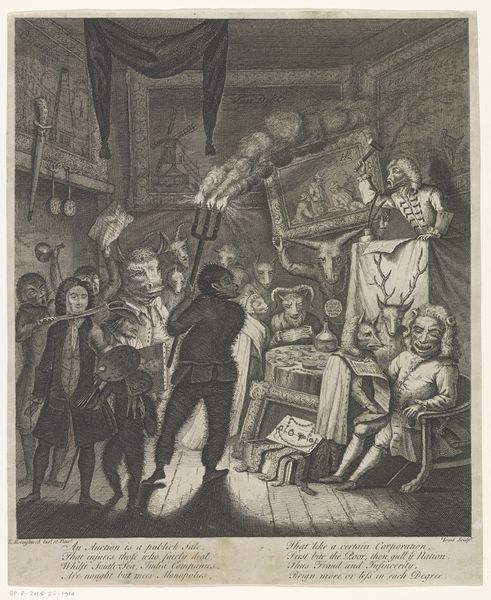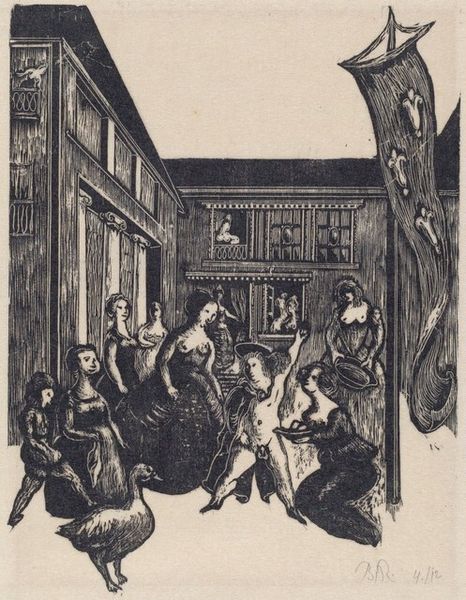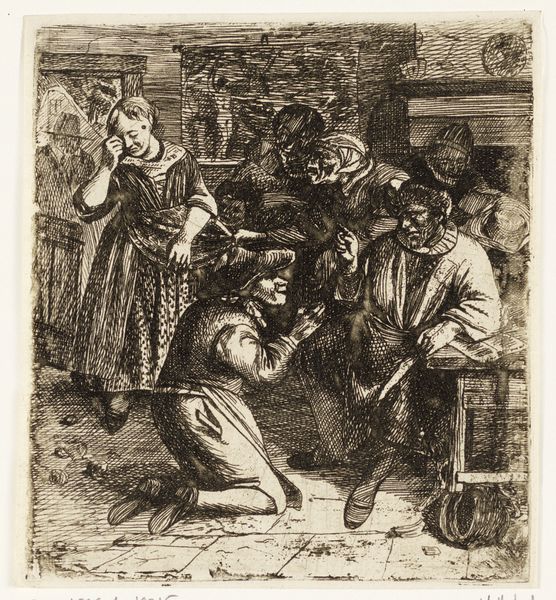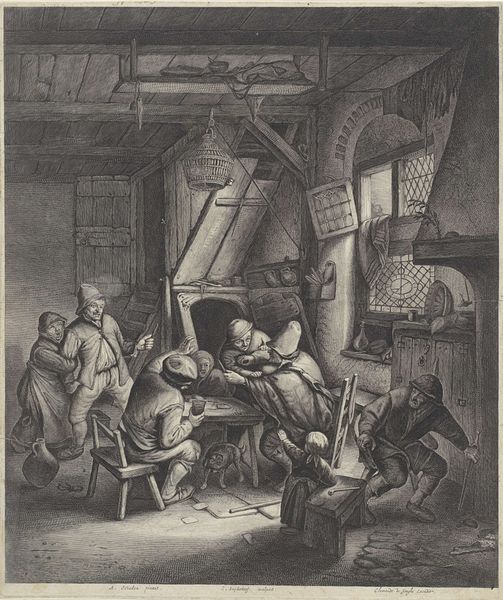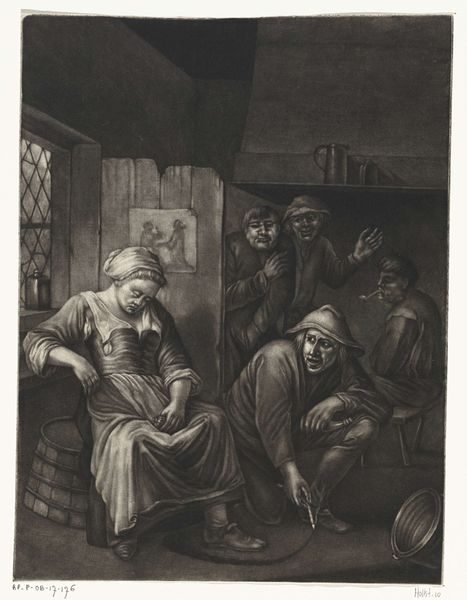
Dimensions: plate: 305 x 303 mm sheet: 467 x 438 mm
Copyright: National Gallery of Art: CC0 1.0
Curator: "Ecce Homo," created by Karl Schrag in 1940, is an etching, a type of print. What strikes you upon first viewing it? Editor: A visceral bleakness. The grays and blacks feel oppressive, like a moral fog. And the way the figures are packed together, some jeering, some silent…it’s unsettling. Curator: Indeed. "Ecce Homo"—"Behold the Man"—references Pontius Pilate presenting Christ to the crowd before the crucifixion. Schrag made this in New York, but, crucially, as a German émigré fleeing Nazism. It casts the viewer as complicit in a much broader narrative. Who are we beholding? And in what state? Are we also the mob? Editor: The crowd is crucial; Schrag renders them with such varying expressions—horror, disdain, casual observation. Their faces feel almost archetypal. Notice how those lower on the staircase are presented in distorted forms, reflecting spiritual ugliness. Curator: Exactly. Schrag connects the biblical narrative with the contemporary rise of fascism. He is speaking to the failures of humanity throughout time. Note also the bars of the railing physically separating us, and some members of the crowd, from the figure in the center. What separates indifference from persecution? How is social and institutional power related to what’s occurring here? Editor: I’m drawn to the Christ-like figure's posture, though. Shoulders slumped, head bowed… it’s not just physical suffering, but a deep resignation. The iconography suggests sacrifice and, in that quiet way, immense moral authority. It's what the jeering crowd does not seem to perceive. Curator: That resonates powerfully. Especially considering Schrag was making art amidst global turmoil. To connect religious iconography and this narrative to contemporary society through printmaking makes his artwork resonate powerfully, I feel. Editor: Absolutely. Schrag has composed a work of art with many different elements and a dark narrative. There is, overall, much for us to consider from the details embedded within the art itself, making Schrag’s statement lasting and true even now.
Comments
No comments
Be the first to comment and join the conversation on the ultimate creative platform.

